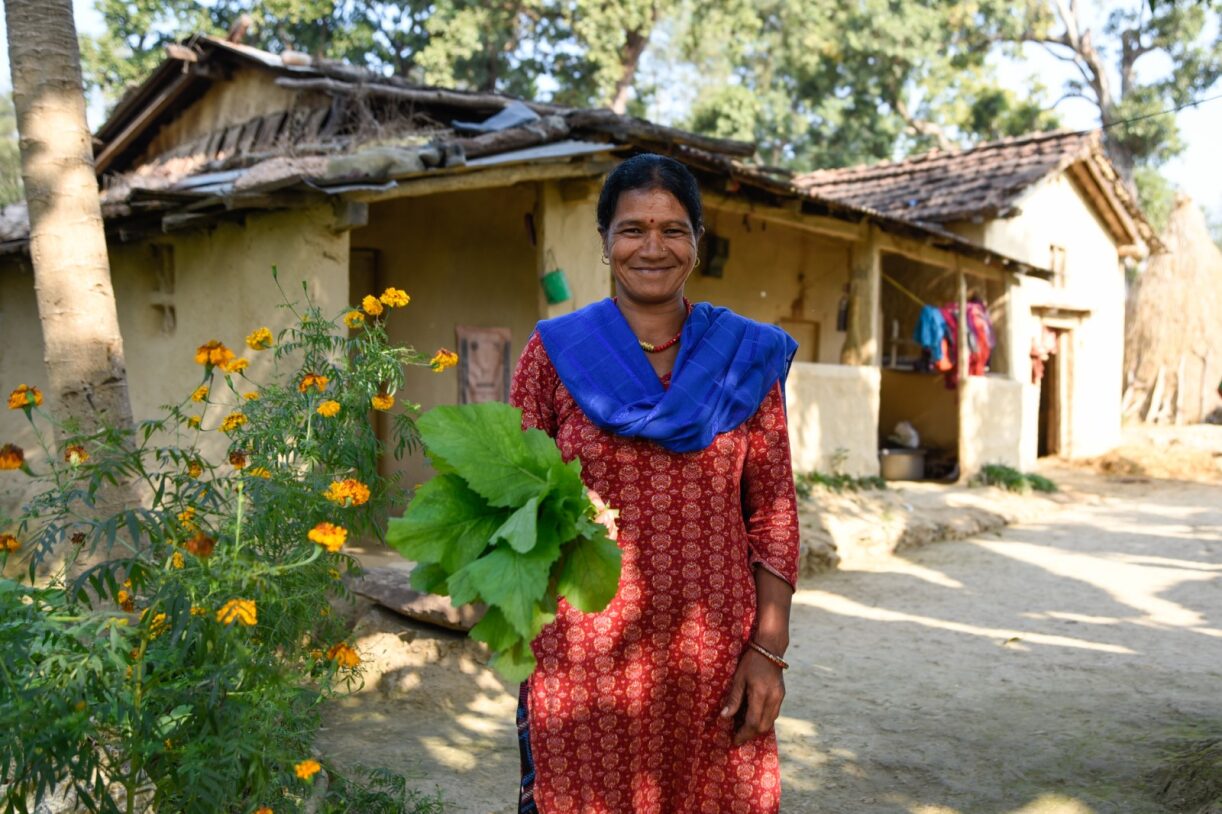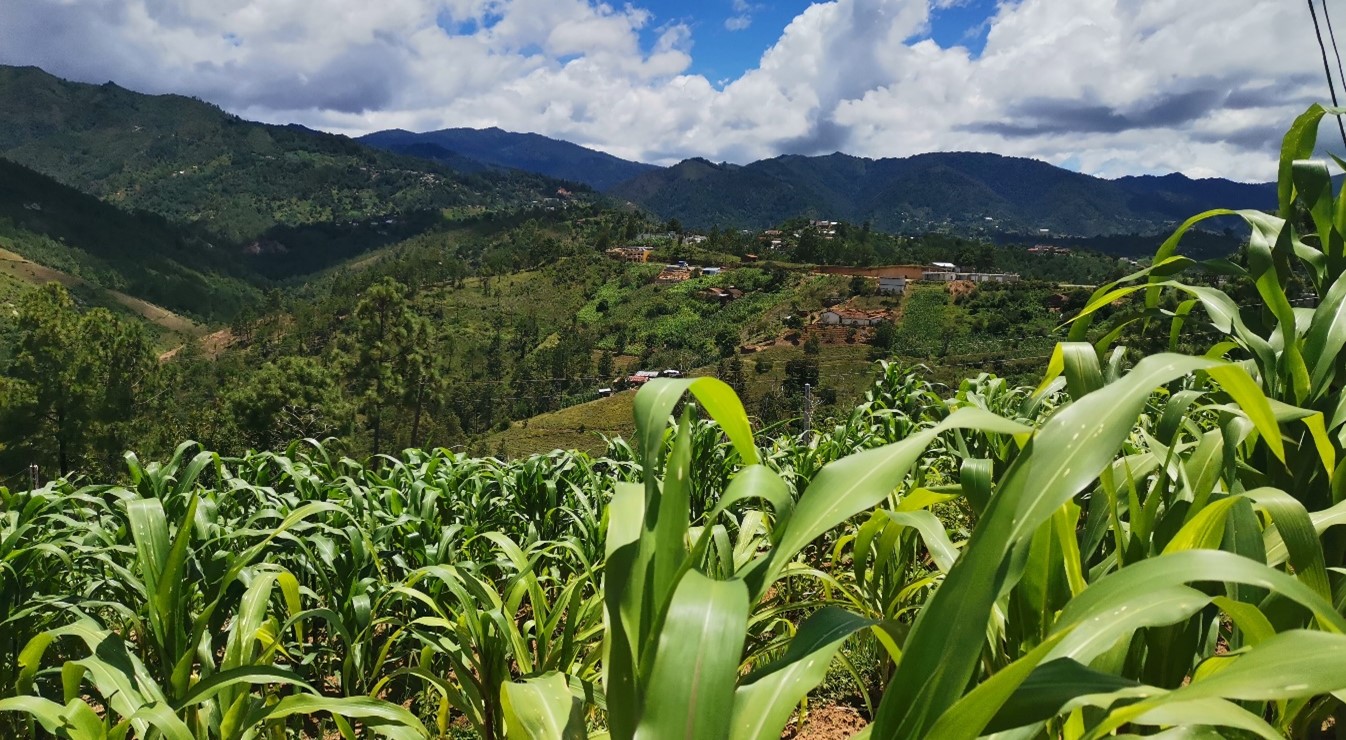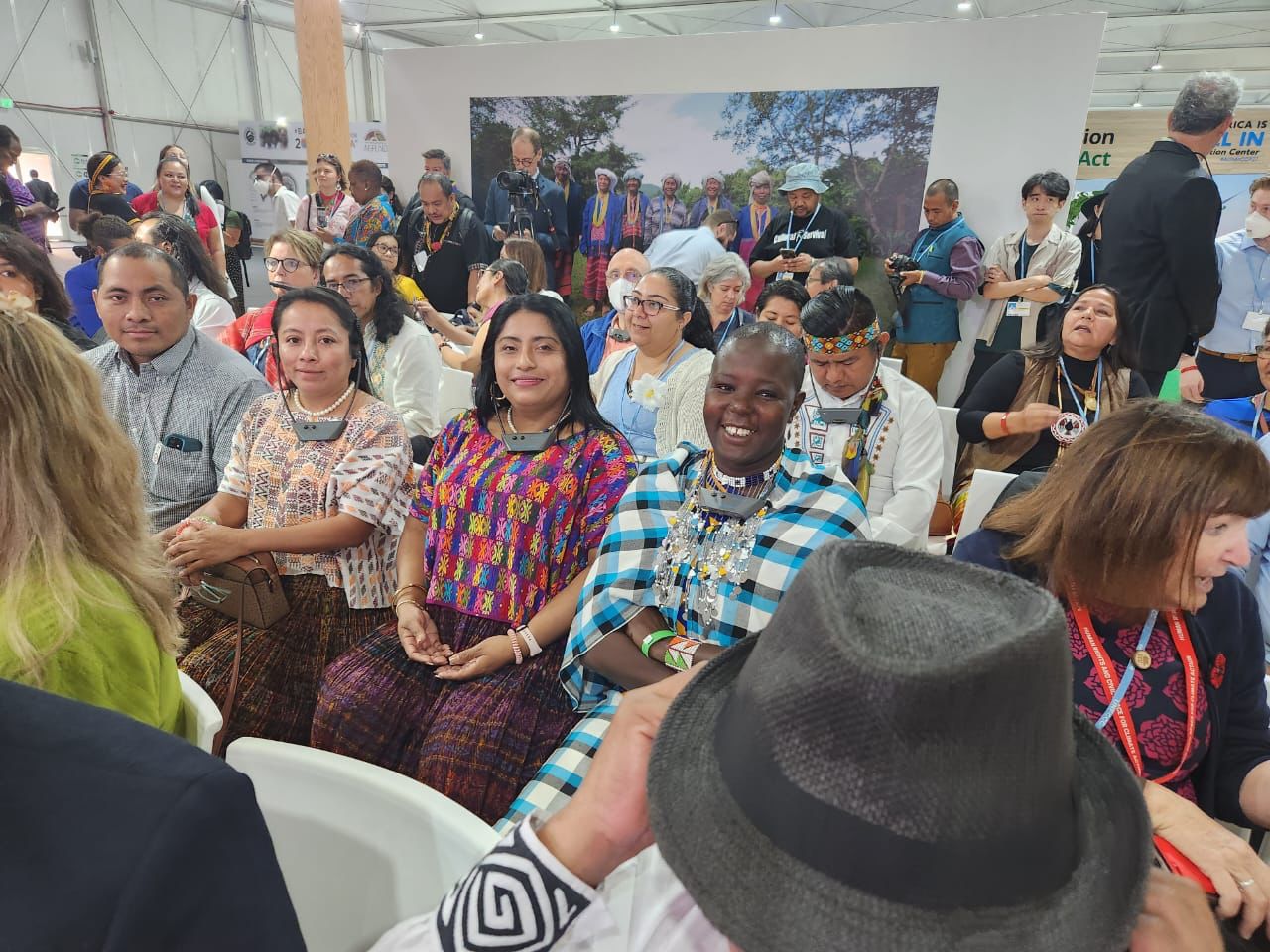Local climate action against the El Niño event in Central America: A Maya K'iche' family leads ecosystem-based adaptation in the Guatemalan highlands
Nested between mountain ranges and a chain of volcanoes, lies one of the most vulnerable areas of America: the highlands of Guatemala, the heart of the Mayan culture, and one of the most densely populated, impoverished and vulnerable to climate change areas in the Central American region. Its predominantly indigenous population, struggles against poverty (83.5%), extreme poverty (33.2%), and uncertainty about its agricultural yields, affected by phenomena such as drought and frost.
Guatemala City, Guatemala, May 20, 2024 (IUCN). In the village of Xecajá, sitting under the shade of a sad pine tree (Pinus pseudostrobus), Pedro Osorio Pú, now 57 years-old, remembers that 50 years ago, life charted his future as a farmer following the death of his father when he was still a child.
Since then, under the guidance and knowledge of his mother, he says, he has been working in agriculture, for instance, in corn and bean cultivation. Looking at the horizon, Pedro remembers a quite different landscape, with a dense forest and abundant water. Today, he says, many of his Maya K'iche' fellows have chosen to sell their land and migrate because of the harsh conditions that make it difficult to farm their fields.
|
In the Guatemalan highlands, small farmers, who depend on crops such as corn, beans, or coffee for food security and income generation, often grow crops on hill slopes, poor soils, areas susceptible of flooding or with scarce water conditions. They suffer from changes in climatic conditions, such as increased rain intensity, frost, low temperatures, and droughts, which impacts the productivity of their crops. @Evelyn Vargas/IUCN |
Given the geological, topographic and soil conditions, Guatemalan communities in the highlands depend on the state of their ecosystems, which are highly affected by deforestation and forest degradation, causing erosion, less water infiltration and increased risk of flooding and landslides. Ecosystem degradation along with the loss and contamination of soil and water have increased communities’ vulnerability.
In addition, current climatic conditions impose greater challenges to the region. For instance, between November 2023 and January 2024, the El Niño phenomenon (ENSO) reached its peak; now it is forecasted up to a 60% probability a transition towards La Niña during the second half of this year according to the agroclimatic bulletin 01-2024.
This will bring difficult conditions for producers in the highlands, given that El Niño event represented a deficit of rainfall with an increase in temperature, while La Niña will bring an excess of rainfall with high probabilities of floodings.
Faced with this situation, local producers need to incorporate smart agriculture practices that may allow them to cope with the changing climate conditions in the region.
In this context, Pedro, and Santa Soc Osorio, along with their five-daughter, five-son, two-granddaughter and one daughter-in-law family, said yes to innovation adopting Ecosystem-based Adaptation (EbA) practices, as part of the implementation of the Resilient Highland project.
|
Currently, Pedro and Santa live with four of their daughters, a daughter-in-law and two granddaughters. Santa and their adult daughters play an active role in different areas of the production process, such as preparing food for the tasks, selecting seeds, and selling the crops. @Evelyn Vargas/IUCN |
Since 2020, the Resilient Highland project has been implementing actions to reduce the impact of climate change on the hydrological cycle of Guatemalan highland basins, to increase the resilience of the ecosystem and local populations.
Recognized as a producer willing to try new methods of agriculture, Pedro narrates that before this project, he did not know how to capture rainwater, so when he heard about the idea of establishing a reservoir for their crops, he decided to try it. This even though most of the twenty invited farmers chose not to participate due to fear of change on new cultivation approaches.
|
With the key line system, rainwater flows are identified and conducted along the plot until the reservoirs, which in turn has adequate fences as a safety measure to avoid human or domestic animal’s accidents. Thus, water is kept longer in the plots and is available during the dry season. @IUCN |
 Pedro agreed to value his plot not only from an agricultural point of view, but also as part of an ecosystem, allowing the incorporation of organic fertilizer, water, and soil management practices, such as bank terraces and infiltration ditches, agroforestry systems and rainwater harvesting methods.
Pedro agreed to value his plot not only from an agricultural point of view, but also as part of an ecosystem, allowing the incorporation of organic fertilizer, water, and soil management practices, such as bank terraces and infiltration ditches, agroforestry systems and rainwater harvesting methods.
Water conservation practices, such as rainwater harvesting, irrigation ditches, and agroforestry systems, help capture moisture for its use during the dry season. While soil conservation practices, such as bench terraces, contour furrows, and the reincorporation of organic matter, improve water infiltration and reduce erosion during periods of excess rainfall.
In this way, Pedro’s 1.67-hectare plot has seven tree forest species such as pine (Pinus sp), cypress (Cupresus lusitanica Miller), oak (Quercus brachistachis) and madrón (Arbutus xalapensis), among others; it also has nine fruit-tree species, five kind of vegetables and cucurbits, as well as the traditional corn and beans. On this land, Pedro’s family also has cows, sheep, chickens, geese, pigs, and turkeys, on a small scale, which produce manure that is incorporated to soil to improve crop’s production.
|
Demonstration plots for adapting to climate change, as Osorio Soc family’s, combine soil and water management practices such as rainwater harvesting, erosion control, organic matter production, and ecosystem restoration, considering the microclimatic conditions of the area. @Evelyn Vargas/IUCN |
The keyline system promoted by IUCN (International Union for Conservation of Nature) and the Ministry of Agriculture, Livestock and Food (MAGA) through the Resilient Highland project, has the support of the Mexican Institute of Water Technology (IMTA), by which eight demonstration plots were established in five Guatemalan watersheds, namely: Joj, Tzunamá, Chipacá, Samalá and La Unión, from the Chixoy, Motagua and Samalá river basins.
The keyline system, presented at the IUCN Mexico 2024 Regional Conservation Forum, is considered a good practice of smart agriculture suitable for the Mesoamerican region, because it increases the capacity of plots to cope with extreme weather events.
Floridalma Osorio Soc, Pedro, and Santa’s daughter, says that keyline practices have improved their daily diet and the family's income: "our situation has changed a lot because we now have fruit and vegetables. With the water reservoir we are going to harvest tomatoes, more beans, more fruit and vegetables. And we will have more to sell, such as peach, apple, pear and avocado." Pedro estimates that the family’s income has been increased by 60%.
|
This farm still preserved a forest patch which has species of pine, cypress, oak and “madrón”, endemic species of this life zone. This forest patch was incorporated into the keyline system as a rainfall catchment area. This production model is part of the Management Plan developed by the Resilient Highland project for the Joj watershed. @Evelyn Vargas/IUCN |
In the past, Pedro was a beneficiary of the Guatemalan forest incentive programs, since then he became a promoter of the Rural Extension Agency of Santa María Chiquimula and is recognized as a promoter of experimental tests. Currently, he has an agreement with MAGA’s Fruit program to test blueberry crop, being a benchmark for other small producers in Guatemalan highlands.
As a result of this experience, MAGA began to organize itself into working commissions with the participation of the Fruit and Watershed Departments, to identify more areas, with the aim of replicating the keyline system.
|
View of the demonstration plot of the Maya K'iche' Osorio Soc family. @Evelyn Vargas/IUCN |
The Resilient Highland project is implemented by the Ministry of Environment and Natural Resources (MARN), MAGA, the National Institute of Forests (INAB), and the National Institute of Seismology, Volcanology, Meteorology and Hydrology (INSIVUMEH).
In addition to IUCN, Resilient Highland Project has the collaboration of the Foundation for the Conservation of Natural Resources and Environment in Guatemala (FCG) and the Rafael Landívar University (URL), with financial support of the GCF (Green Climate Fund) and the Korea International Cooperation Agency (KOICA).



